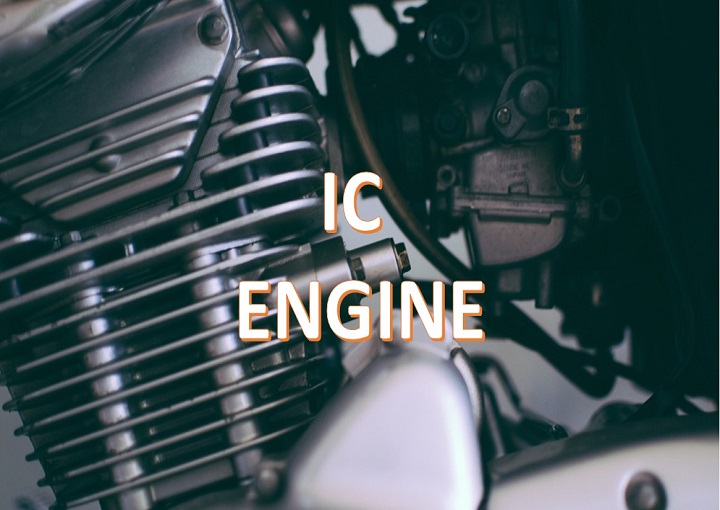Looking to understand internal combustion engines better? Our comprehensive guide covers everything you need to know, from the basics of how they work to their applications and advantages. Whether you’re a professional or simply curious, this article will provide you with valuable insights into this essential technology that powers everything from cars to generators.
Internal combustion engines (ICEs) have revolutionized the way we live, work and play. From automobiles and airplanes to lawn mowers and power generators, ICEs are everywhere. In this article, we will take an in-depth look at how these engines work, the different types of ICEs, their history, advantages, and disadvantages.
Introduction to Internal Combustion Engines
An internal combustion engine is a heat engine that converts the energy from the combustion of fuel into mechanical energy. The combustion takes place inside the engine, where a mixture of fuel and air is ignited. The resulting explosion creates pressure that drives a piston, which is connected to a crankshaft. The rotational motion of the crankshaft is then used to power various applications.
The History of Internal Combustion Engines
The first internal combustion engine was built in 1860 by a French engineer named Étienne Lenoir. It used a mixture of coal gas and air, and produced very little power. Over the next few decades, several inventors improved upon Lenoir’s design, resulting in more efficient and powerful engines. In 1885, Gottlieb Daimler and Karl Benz built the first successful gasoline-powered engine. Since then, ICEs have undergone countless improvements and have become an integral part of our lives.
How Internal Combustion Engines Work
Internal combustion engines work by burning a mixture of fuel and air in a closed chamber, which creates high pressure and heat.
There are two types of ICEs: four-stroke cycle and two-stroke cycle.
Four-Stroke Cycle
The four-stroke cycle is the most common type of ICE used in automobiles, trucks, and motorcycles. It consists of four strokes: intake, compression, combustion, and exhaust. During the intake stroke, the piston moves down, and the intake valve opens, allowing the fuel-air mixture to enter the combustion chamber. During the compression stroke, the piston moves up, compressing the fuel-air mixture. During the combustion stroke, the spark plug ignites the fuel-air mixture, causing an explosion that pushes the piston down. During the exhaust stroke, the piston moves up, and the exhaust valve opens, allowing the burned gases to exit the combustion chamber.
Two-Stroke Cycle
The two-stroke cycle is a simpler and more compact version of the four-stroke cycle. It is commonly used in small engines, such as those found in lawn mowers, chainsaws, and outboard motors. It consists of two strokes: compression/ignition and exhaust/intake. During the compression/ignition stroke, the piston moves up, compressing the fuel-air mixture and igniting it with a spark plug. During the exhaust/intake stroke, the piston moves down, and the exhaust port opens, allowing the burned gases to exit the combustion chamber. At the same time, the fuel-air mixture enters the combustion chamber through a port in the cylinder wall.
Types of Internal Combustion Engines
There are two main types of ICEs:
Spark Ignition Engines
Spark ignition engines, also known as gasoline engines, use spark plugs to ignite the fuel-air mixture. They are commonly used in passenger cars, motorcycles, and small aircraft. They are known for their high power output and smooth operation. However, they also have a lower thermal efficiency compared to compression ignition engines.
Compression Ignition Engines
Compression ignition engines, also known as diesel engines, use high compression to ignite the fuel-air mixture. They are commonly used in heavy-duty trucks, buses, and some passenger cars. They are known for their high thermal efficiency and fuel economy. However, they also have higher emissions and noise levels compared to spark ignition engines.
Advantages of Internal Combustion Engines
Internal combustion engines have several advantages over other types of engines. They are:
- High power output
- Compact size
- Easy to start and operate
- Reliable and durable
- Can run on a variety of fuels
Disadvantages of Internal Combustion Engines
Internal combustion engines also have some disadvantages. They are:
- Lower thermal efficiency compared to other types of engines
- Higher emissions of pollutants
- Noisy operation
- Higher maintenance and operating costs compared to electric motors
Applications of Internal Combustion Engines
Internal combustion engines are used in a wide range of applications, including:
- Automobiles and motorcycles
- Trucks, buses, and trains
- Airplanes and helicopters
- Generators and power plants
- Lawn mowers and other outdoor equipment
Future of Internal Combustion Engines
The future of internal combustion engines is uncertain, as electric vehicles are becoming more popular and affordable. However, ICEs are expected to continue to play an important role in transportation and power generation for the next few decades. There are also efforts to make ICEs more efficient and environmentally friendly, such as by using alternative fuels and hybrid technology.
Conclusion
Internal combustion engines have come a long way since their inception in the 19th century. They have revolutionized transportation and power generation, and continue to be an important part of our lives. While they have some disadvantages, their advantages make them an attractive option for many applications. As technology continues to evolve, ICEs are expected to become more efficient and environmentally friendly.
FAQs
1. How does an internal combustion engine work?
Ans. An internal combustion engine works by burning a mixture of fuel and air in a closed chamber, which creates high pressure and heat. This pressure is then used to power various applications.
2. What is the difference between a spark ignition engine and a compression ignition engine?
Ans. Spark ignition engines use spark plugs to ignite the fuel-air mixture, while compression ignition engines use high compression to ignite the mixture.
3. Are internal combustion engines more efficient than electric motors?
Ans. No, electric motors are generally more efficient than internal combustion engines.
4. What are some alternative fuels for internal combustion engines?
Ans. Some alternative fuels include ethanol, biodiesel, natural gas, and hydrogen.
5. Will internal combustion engine become obsolete?
Ans. It’s possible, as electric vehicles are becoming more popular and affordable. However, ICEs are expected to continue to be used for the next few decades.

